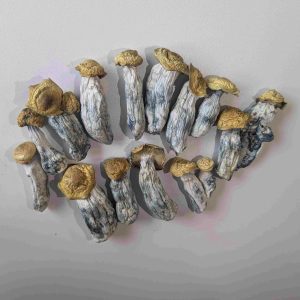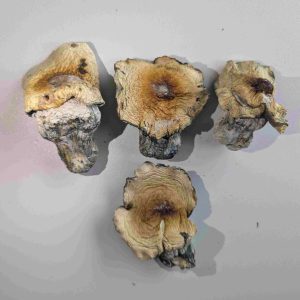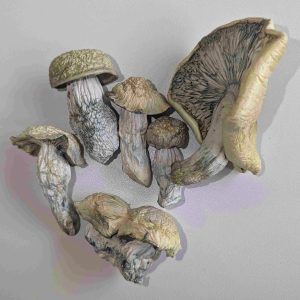Your cart is currently empty!
Psilocybe Cubensis is a widely recognized species of psychedelic mushroom known for its psychoactive properties. Here’s a detailed description:
Appearance: Psilocybe cubensis mushrooms are medium to large-sized fungi with a distinctive appearance. The cap is typically 1 to 8 cm in diameter and varies in color from golden-brown to reddish-brown, often with a lighter center. As the cap matures, it can become more flattened and may develop a central bump. The gills underneath are close together and are initially pale but darken to a purplish-brown as the spores mature. The stem is generally cylindrical, thick, and white to yellowish, and may have a fibrous texture.
Psychoactive Properties: Psilocybe cubensis contains the psychoactive compounds psilocybin and psilocin, which are responsible for its hallucinogenic effects. When ingested, these compounds interact with serotonin receptors in the brain, leading to altered perceptions, visual and auditory hallucinations, and an enhanced sense of introspection and connection. The effects typically begin within 20 to 60 minutes after consumption and can last for 4 to 6 hours, depending on dosage and individual metabolism.
Habitat: This species thrives in subtropical and tropical environments. It commonly grows in dung-rich soils, such as those found in pastures and fields where cows or other large herbivores graze. It is often found in warm, humid conditions, particularly in regions of Central and South America.
Uses: Psilocybe cubensis is used both recreationally and for its potential therapeutic benefits. It has been explored for its effects on mental health, including anxiety, depression, and PTSD, in controlled, clinical settings. Recreational users seek its psychoactive effects for personal growth, creative inspiration, and spiritual experiences.

Only the best and most potent strains in Canada
-
 Penis Envy Uncut$10.00 – $200.00
Penis Envy Uncut$10.00 – $200.00 -
 Hillbilly Pumpkin Mushrooms – Rare High-Potency Psilocybin Strain for Sale$10.00 – $150.00
Hillbilly Pumpkin Mushrooms – Rare High-Potency Psilocybin Strain for Sale$10.00 – $150.00 -
 Albino Bluey Vuitton Mushrooms – High Potency Psilocybin for Sale$10.00 – $150.00
Albino Bluey Vuitton Mushrooms – High Potency Psilocybin for Sale$10.00 – $150.00



